The Koonwarra Fossil Bed
Part 2 - Field Trip March 2018
Report by Lesley Kool
The famous Early Cretaceous fossil locality just outside the pretty hamlet of Koonwarra in Victoria had not been exposed since the last field trip in 2013. In the meantime Dr. Tom Rich from Museums Victoria had been working on a plan to find a method of removing large blocks of rock from the site that could be carefully broken down under optimal conditions. This involved exposing a large area of rock before carefully rock-sawing it into manageable blocks that could be plaster jacketed for transport back to the Museum.
The fossil site is located in a bend of the South Gippsland Highway and permission was given by Vic Roads for the excavation to proceed. The site had become overgrown since the last dig in 2013 and so Tom contacted local geologist Gary Wallis who had a front end loader. Gary and his machine made short work of the overlying vegetation and quickly exposed the rock layers below (image #1).
Once the designated area was exposed volunteers John Wilkins and Dean Wright jack hammered the over burden to reach the relatively unweathered layers below (image #2). Once they found a boundary between two layers they followed it down for approximately one metre (image #3) until they had a nice clean face from which to work.
Once the layer was clean John began cutting blocks approximately 30cm x 40cm in readiness for plaster jacketing (image #4). Unfortunately, once the blocks were cut and attempts were made to extract them (image #5), they tended to break into smaller pieces (image #6). The first block was plaster jacketed (image #7) but it became obvious that the exercise would not work on a larger scale. It was then decided to remove as large blocks as possible, without rock sawing. These blocks were placed in large bags and transported to Gary Wallis’s property nearby, where they would be stored until they could be processed in the future.
In the meantime, Mary Walters (image #8) and other volunteers continued breaking some of the rock that had been excavated and found a number of fossils which included fossil fish (image #9) and a Mayfly nymph (image #10).
As mentioned in Dr. Stephen Poropat’s report in the previous posting, Peter Duncan had experimented in the 1960s with weathering some of the Koonwarra rock in an effort to make it easier to break apart and expose the fossils. Following in Duncan’s footprints, we have also been experimenting on how to weather the rock collected in March 2018 and some of our results will be posted in the next update.
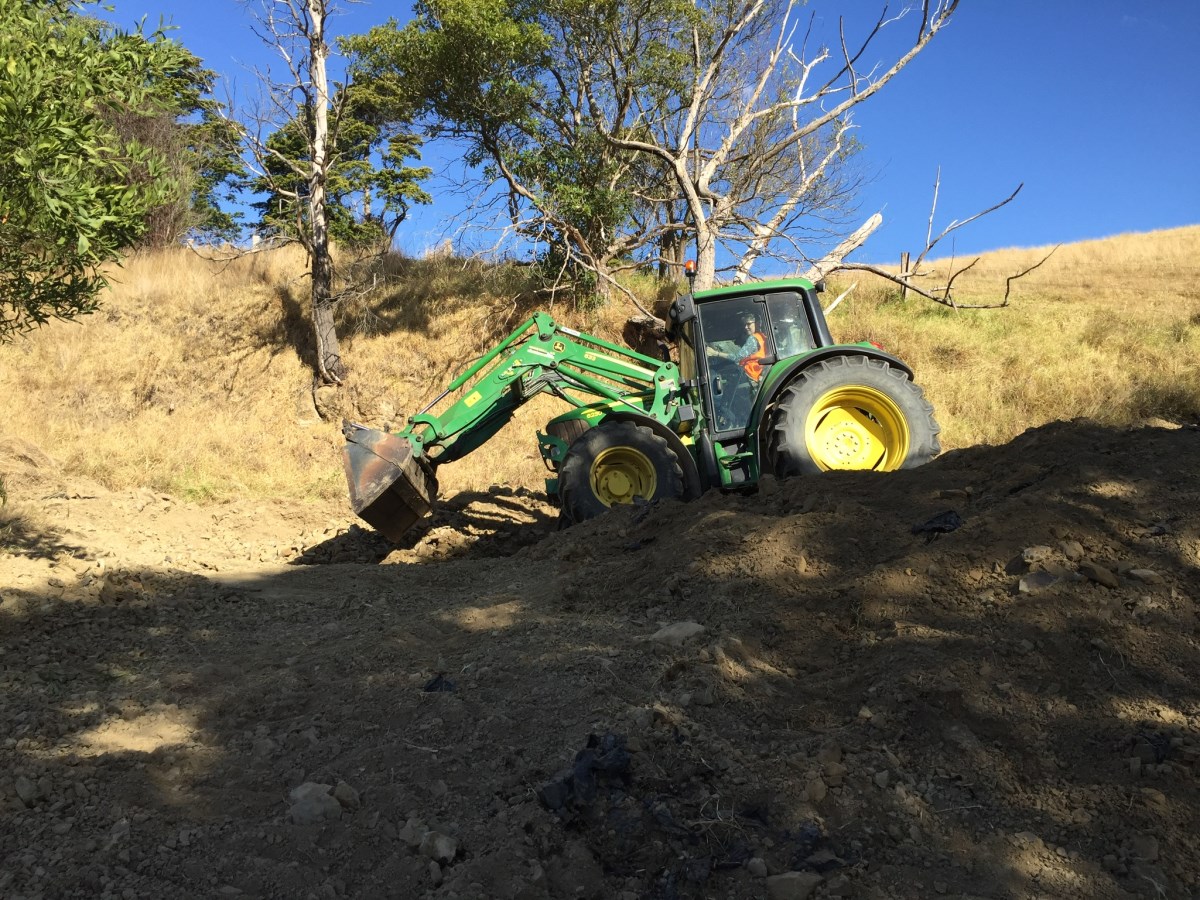
1. Gary Wallis and his amazing machine clearing the vegetation from the Koonwarra site. Photographer: Lesley Kool
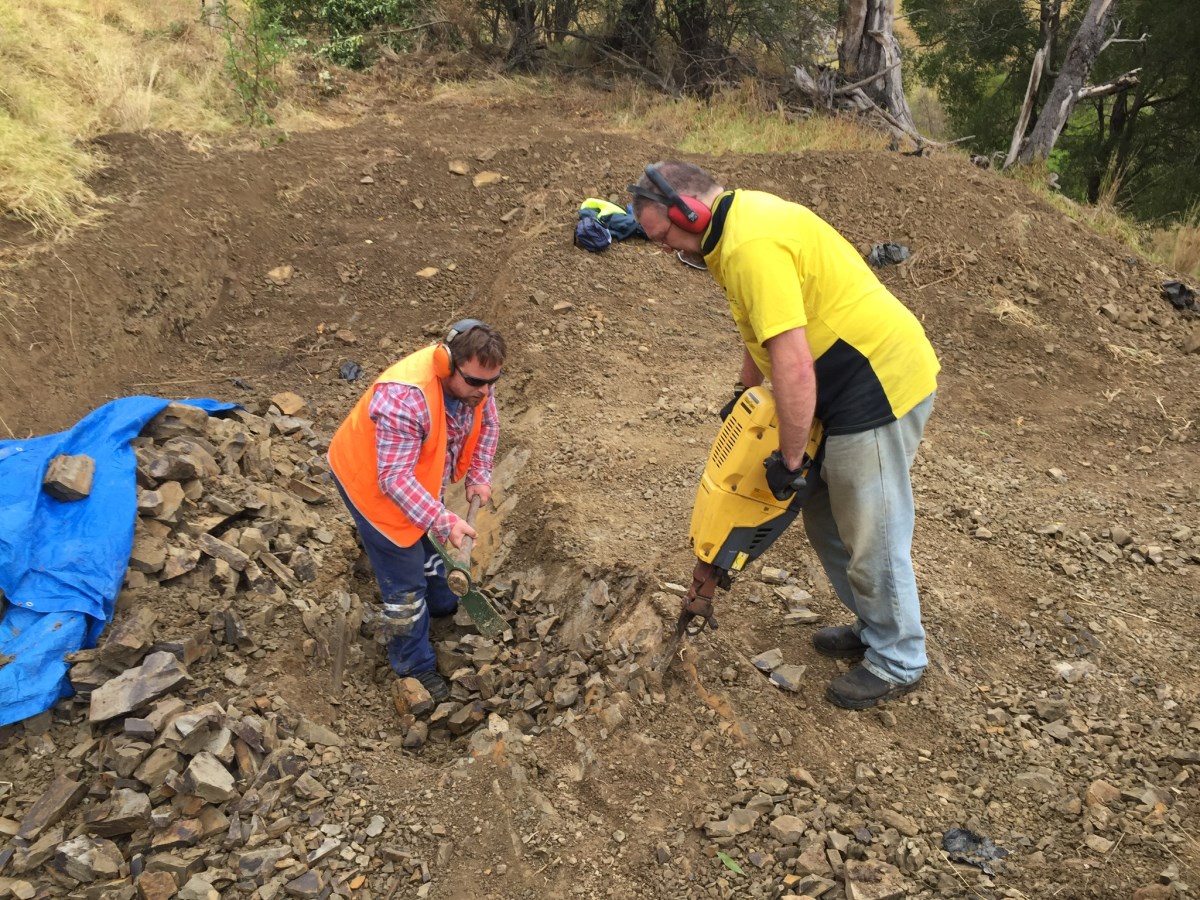
2. Dean and John jack hammering the Koonwarra rock. Photographer: Lesley Kool
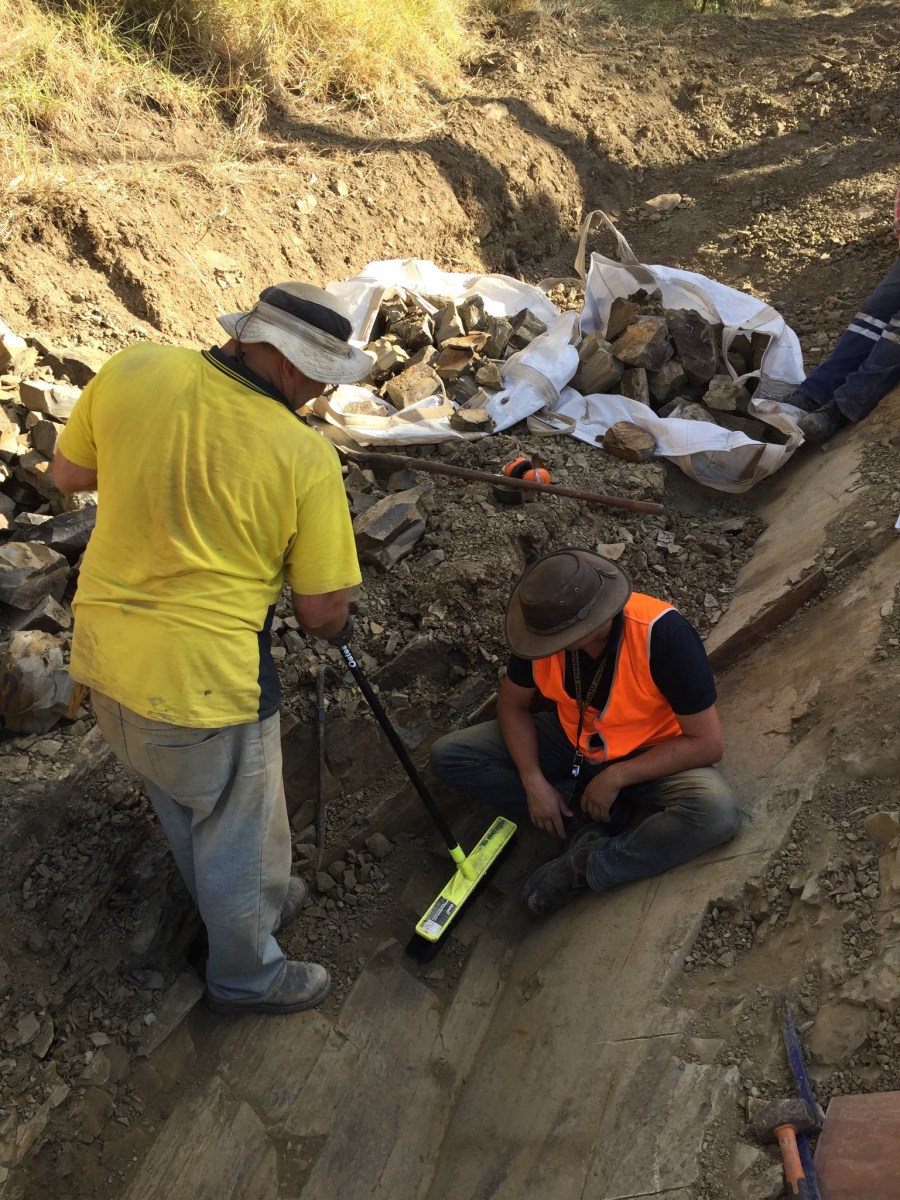
3. John cleaning the face of the rock layer. Photographer: Lesley Kool
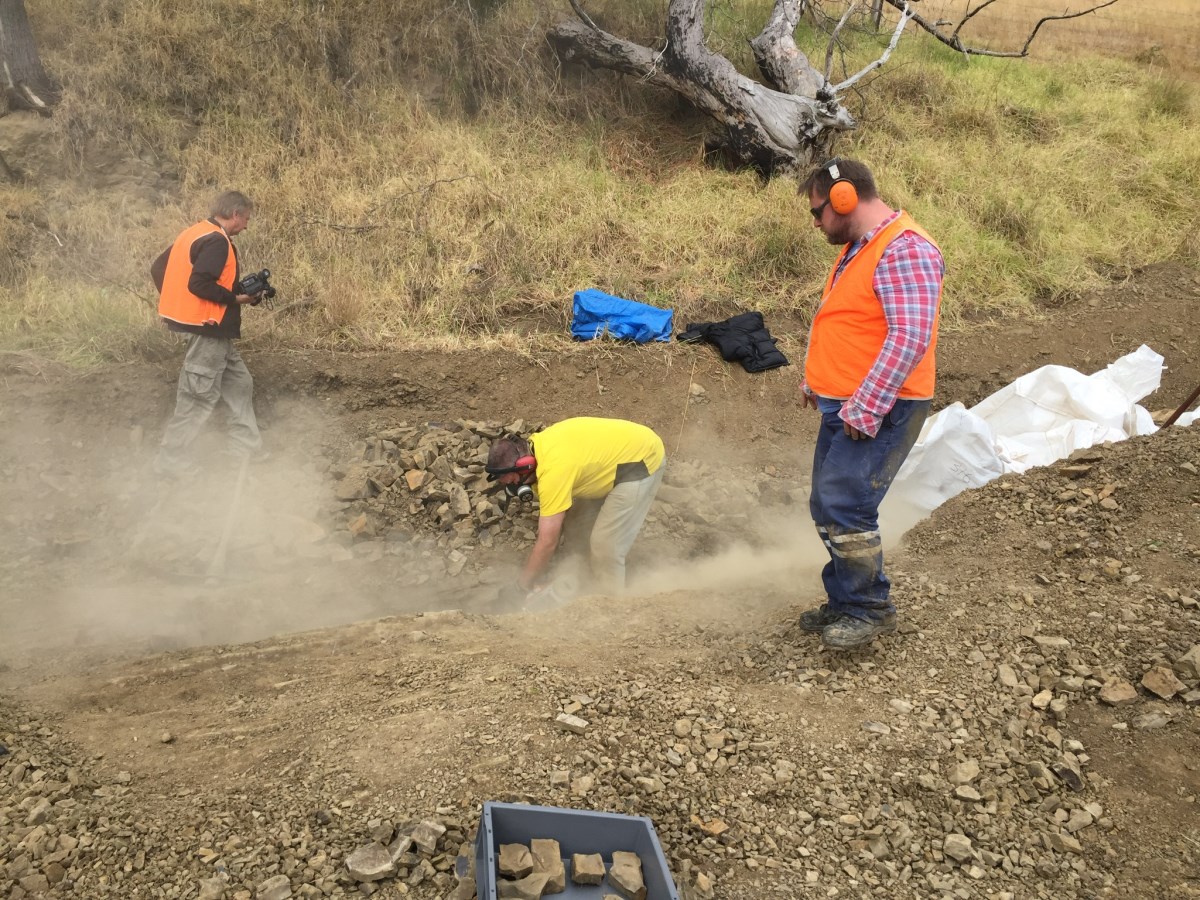
4. John rock sawing blocks of rock. Photographer: Lesley Kool
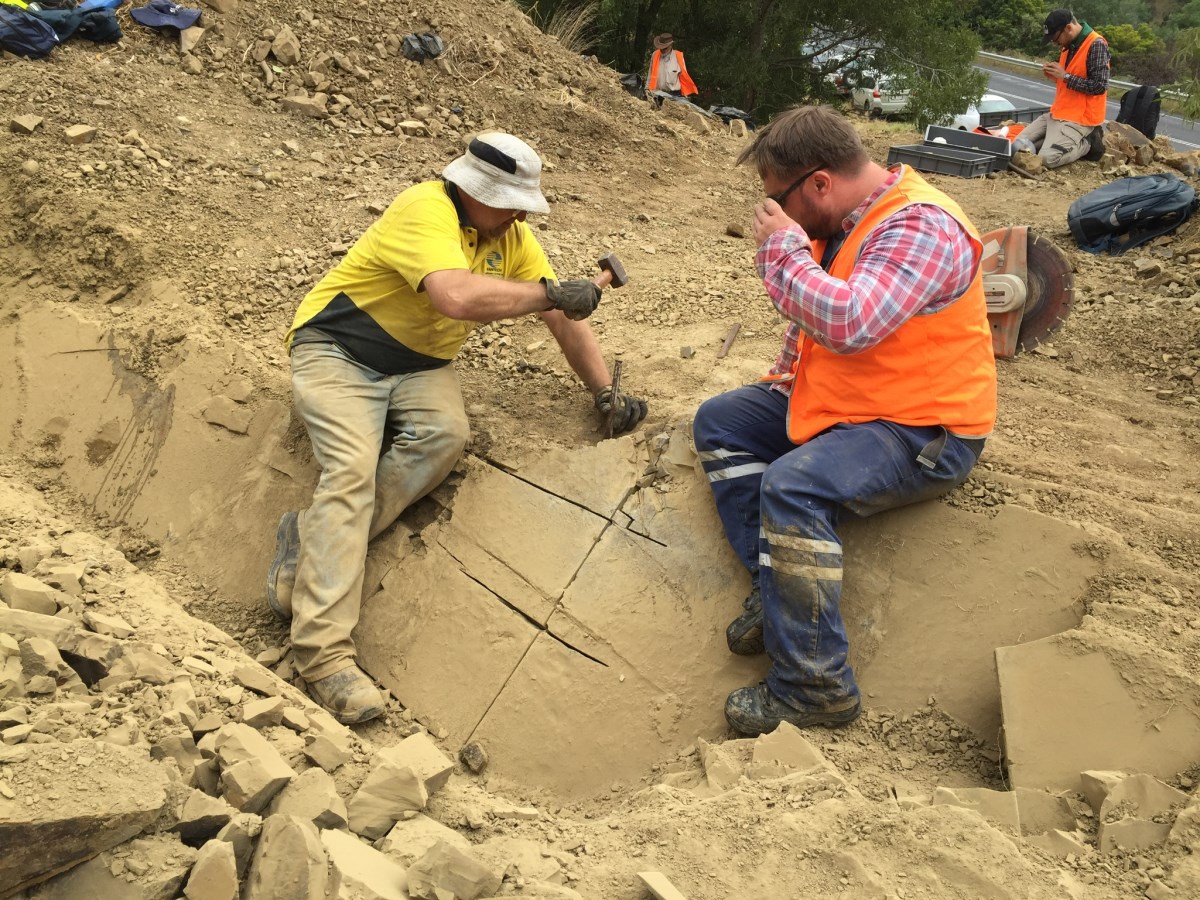
5. John and Dean extracting rock sawn block. Photographer: Lesley Kool
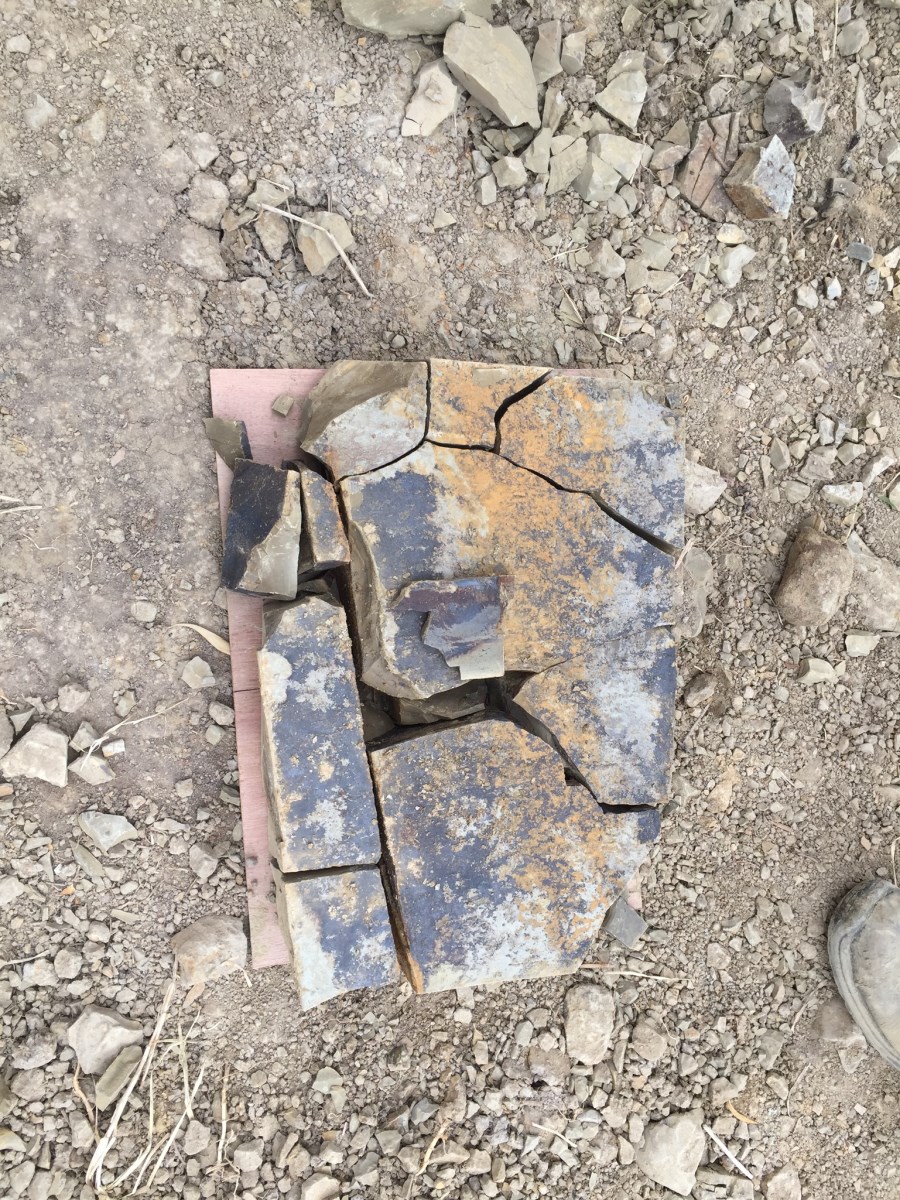
6. First rock sawn block before plaster jacket. Photographer: Lesley Kool
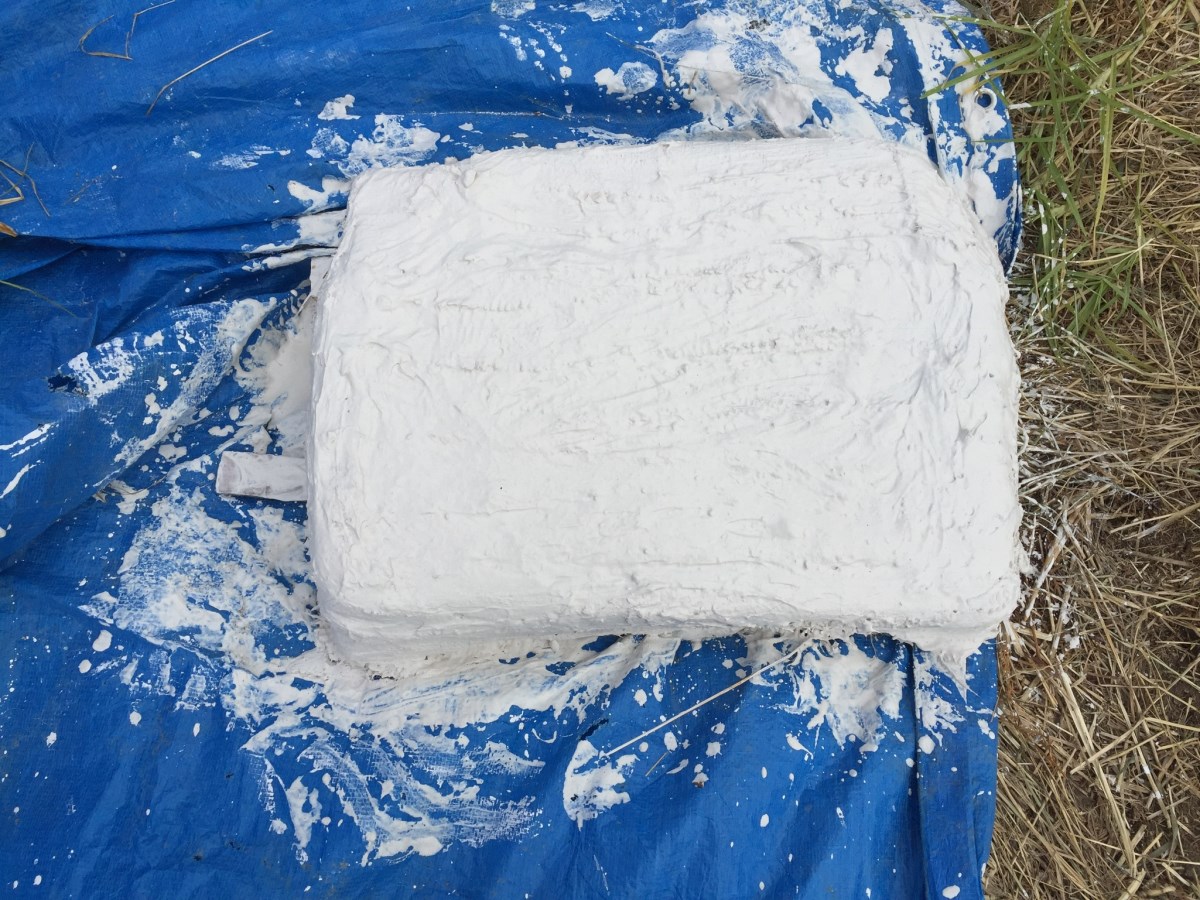
7. Plastered block. Photographer: Lesley Kool
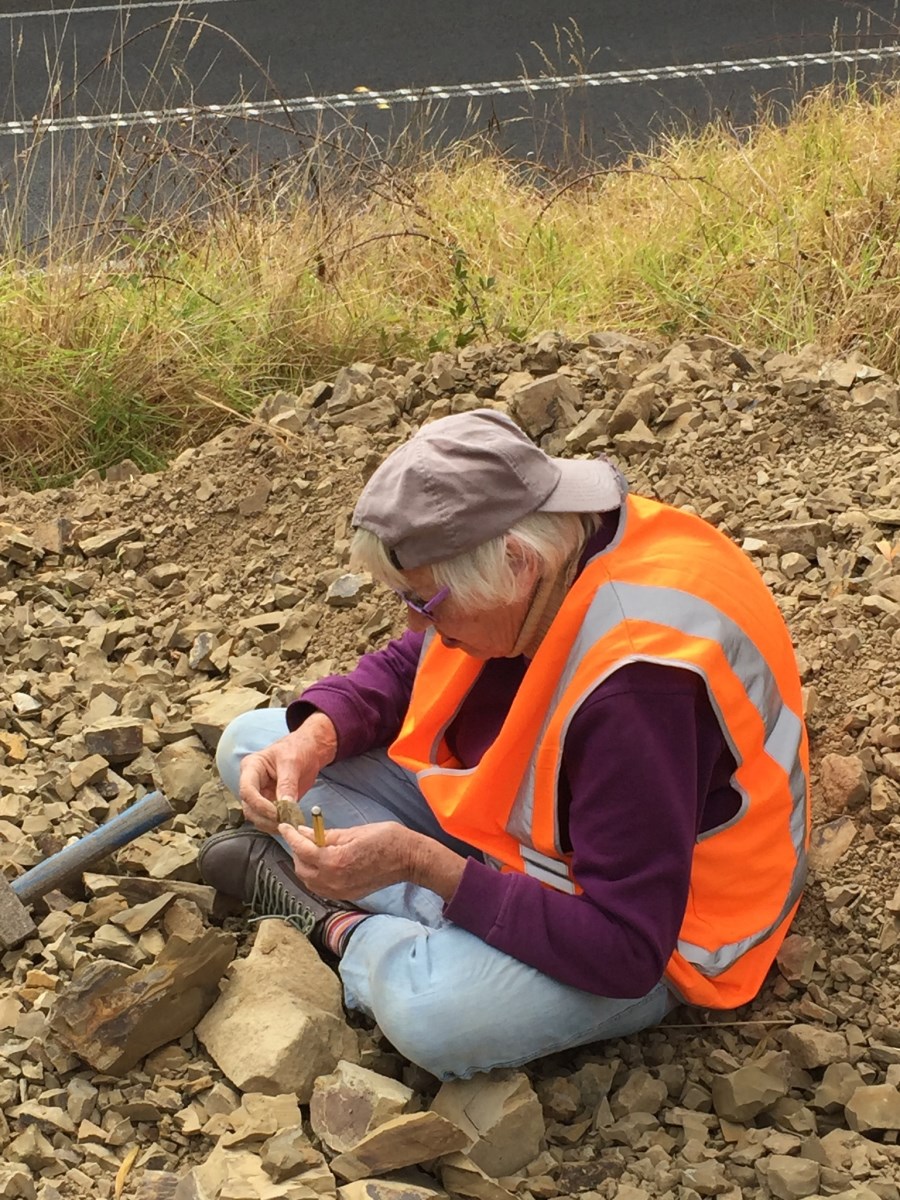
8. Mary Walters breaking rock at Koonwarra. Photographer: Lesley Kool
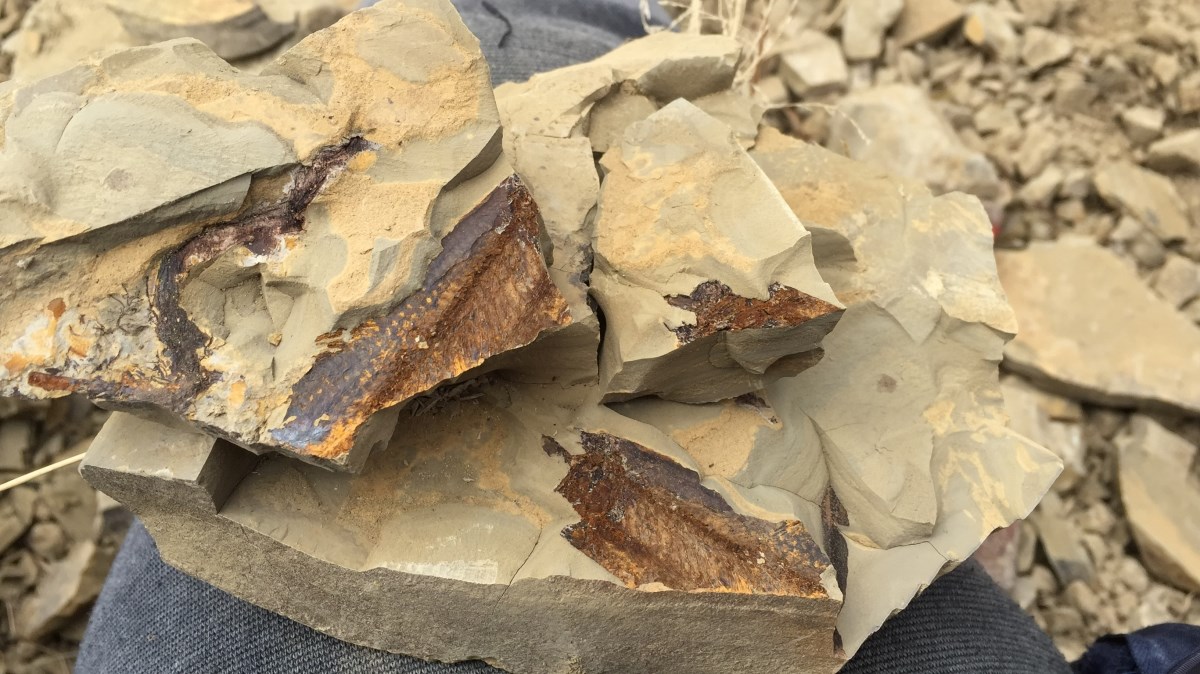
9. Remains of fossil fish. Photographer: Lesley Kool
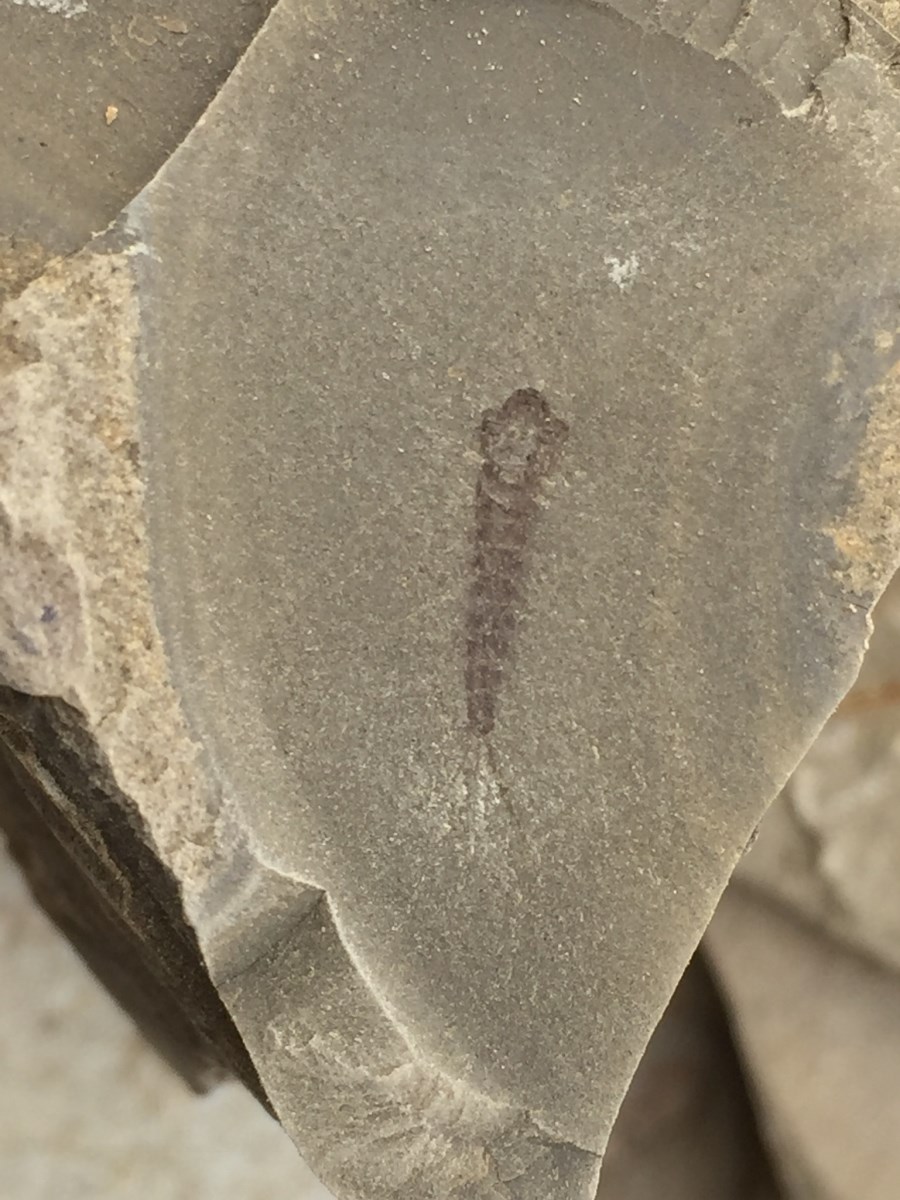
10. Mayfly nymph. Photographer: Lesley Kool
visits